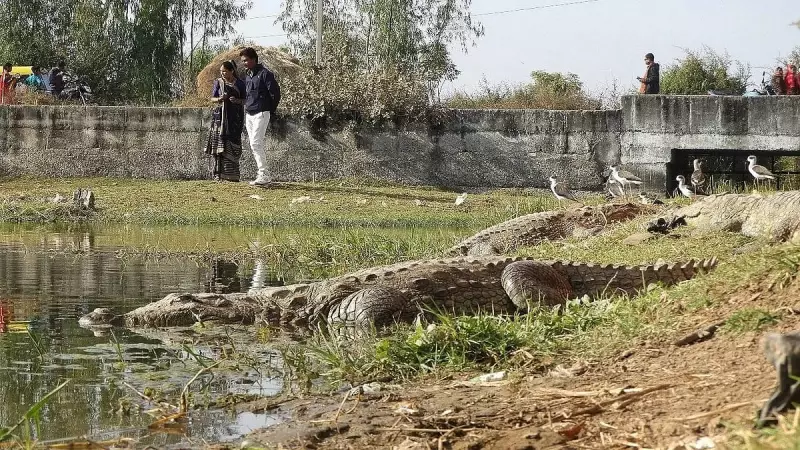
In the rural landscapes of Gujarat's Vadodara district, an extraordinary relationship has blossomed between humans and one of nature's most formidable predators—the marsh crocodile. While crocodile encounters typically evoke fear and danger, these communities have rewritten the narrative, creating a blueprint for peaceful human-wildlife coexistence.
The Unlikely Neighbors
Along the banks of water bodies in villages like Bhavanipura and Shihor, crocodiles have become familiar inhabitants rather than feared intruders. Villagers go about their daily routines—washing clothes, bathing, and collecting water—while crocodiles bask nearby in the sun. This remarkable scene defies conventional wisdom about human-reptile interactions.
Generations of Understanding
The secret to this peaceful coexistence lies in generations of accumulated knowledge and mutual understanding. Local communities have developed an intuitive sense of crocodile behavior, recognizing warning signs and respecting the reptiles' space. This traditional wisdom has been passed down through families, creating a cultural foundation for safety and respect.
Conservation Success Story
This unique relationship has yielded significant conservation benefits. The crocodile population has thrived in these human-dominated landscapes, challenging conventional conservation models that typically separate wildlife from human habitats. The villagers' acceptance has created de facto protected areas where crocodiles can flourish without human persecution.
Modern Challenges and Solutions
Despite this historical harmony, modern developments present new challenges. Habitat fragmentation and water pollution threaten the delicate balance. However, community-led initiatives and increased environmental awareness are helping address these issues. Local conservation efforts focus on maintaining clean water bodies and preserving the natural habitats that support both humans and crocodiles.
A Model for Global Conservation
This successful coexistence model offers valuable lessons for wildlife conservation worldwide. It demonstrates that with mutual respect and understanding, even potentially dangerous wildlife can share spaces with human communities. The Gujarat example proves that conservation doesn't always require separating humans from nature—sometimes, the most effective protection comes through integration and acceptance.
The story of Gujarat's crocodile-friendly villages stands as a testament to human adaptability and the possibility of harmonious relationships with even the most intimidating wildlife species.





